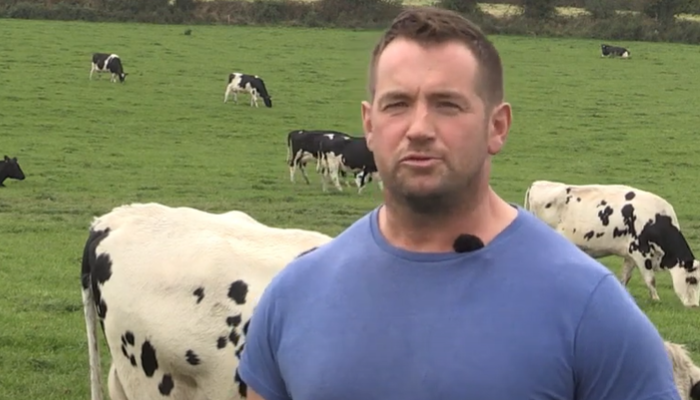14 October 2023
Planning for autumn and winter with Shay Ryan

Shay Ryan is a Signpost programme demonstration farmer, farming outside New Ross in Co. Wexford. Shay farms 97 Ha. The milking platform is 56Ha. There is also a small beef enterprise on the farm. Shay is currently milking an average of 180 cows and has 45 replacement heifers.
Autumn Planning
The EBI of the herd is €213 and the young stock have an EBI of €261 and €271. In 2022 he supplied 468kg MS/cow & the plan is to raise this to 500Kg.The soil fertility on the milking platform has been improved to Index 3 and 4 for P and K and the farm grew 15.7 tonnes of grass DM/Ha in 2022. Shay aims to reseed 10% of the milking platform every year. This year he went with the PPI grass Nashota and 1.5kgs white clover seed.
I keep on saying “next year is going to be better” and believe it. You need to keep on driving yourself to improve and planning is part of this. John F. Kennedy is quoted with saying “the time to repair the roof is when the sun is shining” so a bit of planning now might make things easier in 2024.
Nitrates Derogation
One of the things driving the planning at the moment is the recent changes to nitrates derogation. Currently we are farming at a stocking rate of greater than 220 kg N per ha so will need to reduce stock for 2024 as we don’t plan to take on any extra land. We’ve looked at the options with our Teagasc advisors and for us it will mean selling cull cows earlier and reducing the amount of cattle kept. To be honest fattening culls and cattle are like a savings account for us. These are the least profitable stock on the farm but sale of stock helps with cashflow at times of the year when the milk cheque is small. It’s the same for many farms I know and for us a reduction in some of this stock should help us keep within the derogation limits next year.
What Cows to Cull ?
What cows to cull? Aside from cows scanned empty, the plan is also to tidy up the herd by culling any cows with persistent mastitis, any cow ever lame, ones I am not happy with in parlour. A lot of older cows mainly. We like to give the benefit of the doubt to poor performing heifers by giving them the opportunity to mature. For some it takes an extra lactation or two to really show what they are capable of. Traditionally we fatten the cull cows. This year they will be sold out of the parlour as we are trying to get out of the habit of keeping the cull cows. Waiting until January might not be a good idea as depending on prices in mart or factory we might be tempted to keep them a few months extra and that would have a knock on effect on 2024 nitrates figure. The balance between fattening culls and selling them straight from the parlour will vary between farms depending on stocking rate, space in sheds, feed supply (grass and silage), cost of meal, slurry storage capacity etc..
Winter Feed
We have plenty of surplus winter feed and good growth rates are good but we want to be coming out of next winter with a full pit of silage. We didn’t have that reserve at the start of 2023 I was nervous for the summer, particularly with the lighter first cut of silage and a drought. Droughts are to be expected and we need to have that insurance feed available. Silage in the pit is like money in the bank… in fact better, as money in the bank isn’t much good to us when there is a drought and all the neighbours are competing for the same supply of feed. Where we are based in Wexford there is a good supply of maize so it is a no brainer for us to buy in some as an insurance policy. With the cost of fertiliser, plastic etc. grass silage has gotten a lot more expensive in recent years making the difference between grass and maize silage marginal in our opinion. We are also in the fortunate position of having a spare pit to put the maize into. We have enough good bales for supplementing the milking cows in January and February so the maize is fed at the back end of the year or during periods of drought.
Paddocks & Hedging
We are also getting paddocks sorted for next year by putting extra gaps in them now, so we won’t be running around fencing in January. One or 2 fields need a few extra gaps to help give better access to them. Hedges will be cut in the next month – side trimming mainly and leaving a mature tree grow up every 300 m or so. We have ordered some plants to sow some hedging to make an effort to improve biodiversity on the farm.
Find out more about Signpost Sustainability Month 2023
